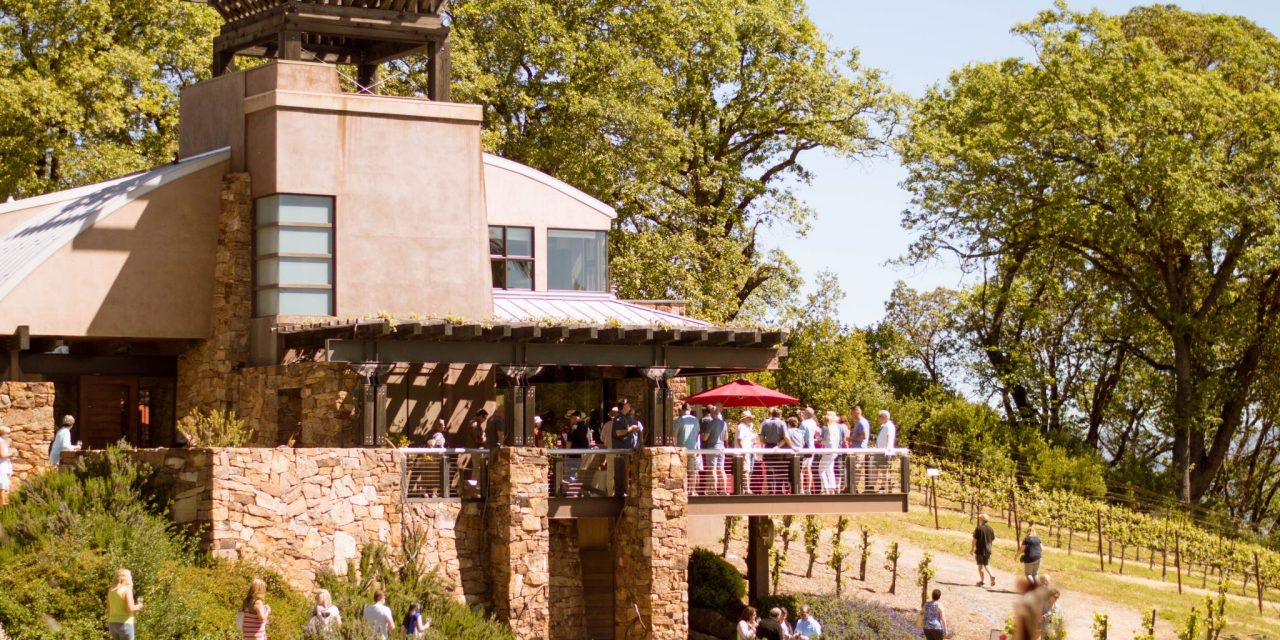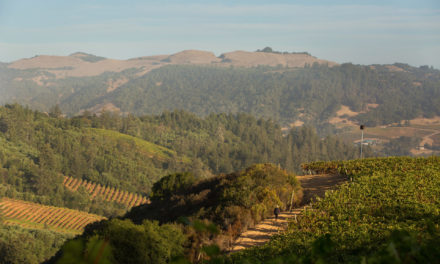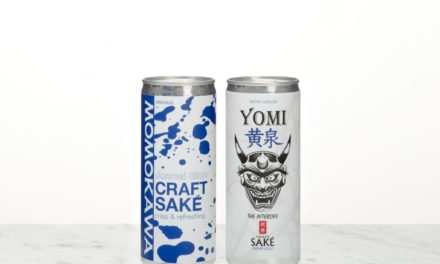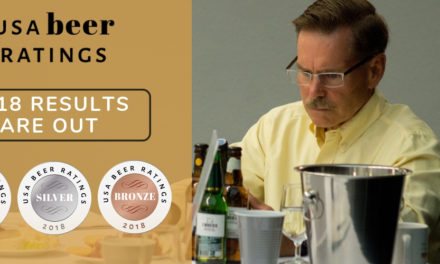Since the 1970s, U.S. wineries have been inviting consumers to become “part of the family” through membership clubs that provide access to new release wines and a variety of exclusive perks and experiences. Fast forward through the craft revolution. Today, breweries, cideries, and distilleries are also establishing membership clubs. They often take cues from wine’s well-proven methods to attract and engage faithful followers.
A club is a flexible, scalable, and easy way to introduce a brand to a local or national audience. It also gives producers a low-cost method to test out the popularity of new releases and rare reserves. A club can also be a tool to promote grounds and facilities as rentable event space, educate members about the brand’s history, or fund a pet project.
Bottom line: Beverage clubs are marketing tools that guarantee sales and let producers showcase special bottlings while spreading brand awareness via personal storytelling.

“When people visit a winery and have a good experience, they develop a connection with that brand. It’s very powerful.” — Nancy Light, vice president of Wine Institute
Build Your Club
Any beverage producer with repeat customers will benefit from a club, and getting started can be as simple as asking. Nancy Light, vice president of Wine Institute in San Francisco, Calif., says a tasting room staff’s initial consumer contact is key. Producers often increase membership by incentivizing tasting room staff with a bonus for each sign-up. “When people visit a winery and have a good experience, they develop a connection with that brand. It’s very powerful,” she says. With proper staff training, the positive experiences can often be converted into club membership.
A sign-up usually starts with a conversation. Jason Spears, founder of Locust Cider in Woodinville, Wash., sees membership rates climb when the taproom is slow. “That’s when we have a chance to have a one-on-one conversation,” he says. “We like to maintain a casual, personal atmosphere and connect with our customers.” According to Spears, Locust established its club two years ago. It now has around 300 members, mostly locals, who pay an annual fee of $125. Most members signed up for the perks that come with each taproom visit: a free pint or a flight for them and a guest and half-priced growler fills. They also like the invites to parties for special release beverages.
Some clubs offer new members immediate discounts and access to upcoming events. “We offer tasting room customers incentives to join, like an extra discount, free shipping, and a wine-related gift such as a customized wine opener or wine stopper,” says Tara Albertson, tasting room and wine club manager of Gustafson Family Vineyards in Healdsburg, Calif. Gustafson’s club is free to join but requires a one-year commitment. The 600-member winery club has two levels and started in 2009.

“The number one benefit to having a club is that it creates a direct relationship with the consumer.” — Jeremy Benson, president and owner of Benson Marketing Group
By engaging the visitors who’ve already sought out your product and facility, building a club becomes an act of camaraderie rather than a strict business transaction. This starts the relationship on an upbeat note and makes membership akin to friendship.
“The number one benefit to having a club is that it creates a direct relationship with the consumer. This creates opportunities for upselling [more expensive wines] and cross selling [similarly priced wines], as well as encouraging sales through on- and off-premise accounts,” says Jeremy Benson, president and owner of Benson Marketing Group with offices in Napa, Calif.; New York, N.Y.; and Lyon, France.
“If a consumer has heard from wineries [about certain vintages], they’re more likely to ask for [those wines] in restaurants and retail stores. While selling direct to a consumer is more profitable for the winery, in the United States, a healthy winery typically is selling wines through both the direct channel and the traditional three-tier sales channel.”

“We send [members] our best wines and don’t use our clubs as a clearinghouse.” — Stephanie Trotter-Zacharia, director of sales, Tedeschi Family Winery
Creating a club model with amazing perks and a distinct personality helps your company stand out. Personalizing options, like letting customers choose all red wines or all sour beers, give your staff an understanding of your customers’ tastes. Custom thank-you gifts, including logoed wearables and accessories, build loyalty and reinforce your brand’s personality, whether it’s luxury, laid-back, or somewhere in between.
Onsite events are another excellent idea. They let members get to know one another and form more personal relationships with your brand and products. Concerts, food pairings, seminars, and winery tours provide customers with memorable experiences that they share with friends. Those who join the club become your storytellers.
Stephanie Trotter-Zacharia, director of sales for Tedeschi Family Winery in Calistoga, Calif., says pick-up parties help her members stay in touch. “Twenty percent of our members live locally in the San Francisco Bay Area. We have complementary pick-up parties [three times per year] with food, wine, and music,” says Trotter-Zacharia.
Vida deLong, director of consumer sales for Stag’s Leap Wine Cellars in Napa Valley, says winery-centered events are also a draw for her company’s club members. “We have 7,500 active members, 70 percent of whom live within 60 miles of the winery,” says deLong, “We offer complimentary tastings, winery events exclusive to members, four-course vineyard dinners, blending events, and more.”
Food-pairing events, especially those that involve partnership with restaurants as well as other local food purveyors, are a popular trend that many producers are following. This past fall, Matthew Rick, owner, winemaker, and distiller at Infinity Beverages Winery & Distillery in Eau Claire, Wis., hosted a “Slice of Syrah” event that paired Infinity’s seasonally released whiskey barrel-aged Syrah wine in tandem with a nearby pizzeria’s food.
“We also paired our newest release, Mystique Mulberry wine with meatballs marinated in a mulberry sauce,” he says. “We have a seasonal drink menu where we make really unique cocktails with our [spirits and wines]. We enjoy sharing a taste of the spirit alongside [the final drink] so customers can see how the spirit influences the cocktail.”
Maintain Your Club
When building a beverage club, it’s important to make the sign-up process easy by having staff enter a customer’s information, creating a website with a short form, or building an app that lets members sign in quickly and earn rewards. Customer relations management (CRM) software programs can store and update data so your staff has more time to make the personal connections that lead to membership. (For more about CRM software, click here.)
Traditionally, club members receive regular shipments of preferred products, chosen either by the producer or the member, and further discounts on additional purchases. These may include limited, members-only releases.
Keeping in touch through phone calls, emails, and social media posts helps producers stay top-of-mind with club members throughout the year. Producers can engage club members with company updates, recipes, and education to ensure customers are excited to revisit the tasting room or receive their next shipment.

Shacksbury Cider co-founder David Dolginow (left): “We’re trying to find and propagate unique apple varieties throughout the Champlain Valley of Vermont.”
Shacksbury Cider in Vergennes, Vt., started its club in 2016; it now has 150-members. Says cidery co-founder David Dolginow: “We’re trying to find and propagate unique apple varieties throughout the Champlain Valley of Vermont,” he says. “We’ve identified more than 1,100 trees and, so far, tested 150 of them to see what kind of cider they’ll make.”
Members receive either three or six bottles of ciders from Shacksbury’s The Lost Apple Project (TLAP) club every quarter, depending on their chosen subscription tier. Members also get tasting notes, stories about the ciders’ origins, and recipe pairings. Proceeds help the company continue seeking out wild apples with “the tannins, acidity, and aromatics to make terroir-distinct ciders.” The Shacksbury team uses Instagram and occasional email newsletters to showcase TLAP “mother trees” and apples.
Tim Larsen, owner of Snowdrift Cider Company in Wenatchee, Wash., started his club earlier this year. He finds value in sending regular emails to discuss cider apples, cidermaking procedures, and cider history. “The number one engagement tool is cider in their mouth, so we also do a special vertical tasting [event] that showcases two to three years of the same product or occasional special releases in partnership with a local restaurant,” says Larsen.
Kate Davis, marketing assistant for Bear Republic Brewing Company in Cloverdale, Calif., says the brewery’s club started at an annual educational tasting event called the Cellar Party. “From there, we reached out to our fan base via social media and email marketing as well as provided information to local businesses,” says Davis. Bear Republic’s club started in 2016, is shipment-based, and has no cost to join. “You pay only the cost of the beer, six bottles per shipment. An average shipment will include three bottles each of two of our artisan beers. [It’s] $180 per shipment, excluding tax and shipping,” says Davis.
Grow Your Club
Club membership can soar in a few months or take several years to reach capacity. Whether you’re signing up five people per month or 50, take it in stride. All members are important.
Tedeschi customizes its club experience by offering four different clubs to meet customers’ wine preferences. “We developed a red-only wine club, a chilling club that centers around white wines and rosé, a mixed-case club that includes library/reserve
wines, and a family club that offers four bottles three times per year,” says Trotter-Zacharia. “We send [members] our best wines and don’t use our clubs as a clearinghouse.”
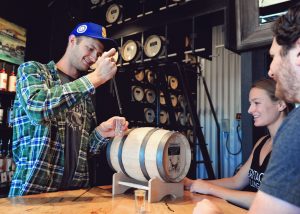
Heritage Distilling lets members of its Cask Club age a private 10-liter barrel at one of the company’s three locations for an average of six months.
Heritage Distilling Company, Inc., based in Gig Harbor, Wash., offers two different clubs. Cask Club members age a private 10-liter barrel at one of Heritage’s three locations for an average of six months, while Spirits Club members receive a quarterly shipment of three bottles of a spirit. The Spirits Club itself has three levels: house, top shelf, and distiller’s reserve. The many choices allow Heritage to build support from a large fan base.
“That helps every member become a huge advocate for our brand. They’re excited to show all the products Heritage makes,” says Hannah Hanley, director of strategic development.
Clubs have different paths to success. If you get stuck, turn to other producers for help, even those that make different products or are located in far-away regions. Erin Flynn, marketing manager of Dr. Konstantin Frank Winery in Hammondsport, N.Y., used research and the addition of benefits centered around providing members with a sense of exclusivity to grow the winery’s club 800 percent in six years.
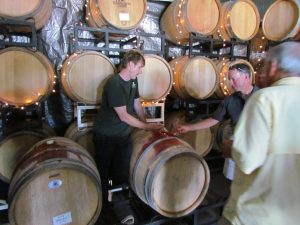
Erin Flynn, marketing manager of Dr. Konstantin Frank Winery in Hammondsport, N.Y., points to experiential events for members highlighting different winemaking topics as a way to successfully develop interest in annual club events.
“We had an idea of what would work, but we looked at [how] a number of different wineries from different regions of the world [built their clubs],” says Flynn. She points to experiential events for members highlighting different winemaking topics as a way to successfully develop interest in annual club events. “Now we have a well-attended wine club picnic and many wine educational events annually, including library tastings and wine and food pairings,” says Flynn.
Protect Your Club
No matter how you structure your club, it’s imperative for all beverage producers to work with experienced legal counsel. To properly maintain a club that relies on shipping, producers must abide by incorporation and reporting requirements. They must also be aware of changes in shipping and tax laws.
Alex Koral, a Boulder, Colo.-based attorney and industry outreach advisor at ShipCompliant by Sovos, says producers should get their state business license before distributing their product. “Know and comply with the regulations regarding sales tax collection,” he says, adding that remaining in compliance with state laws helps a producer maintain a positive image.
“The commitment starts in your tasting room,” he says. “It helps your club members care as much about your product as you do.”

